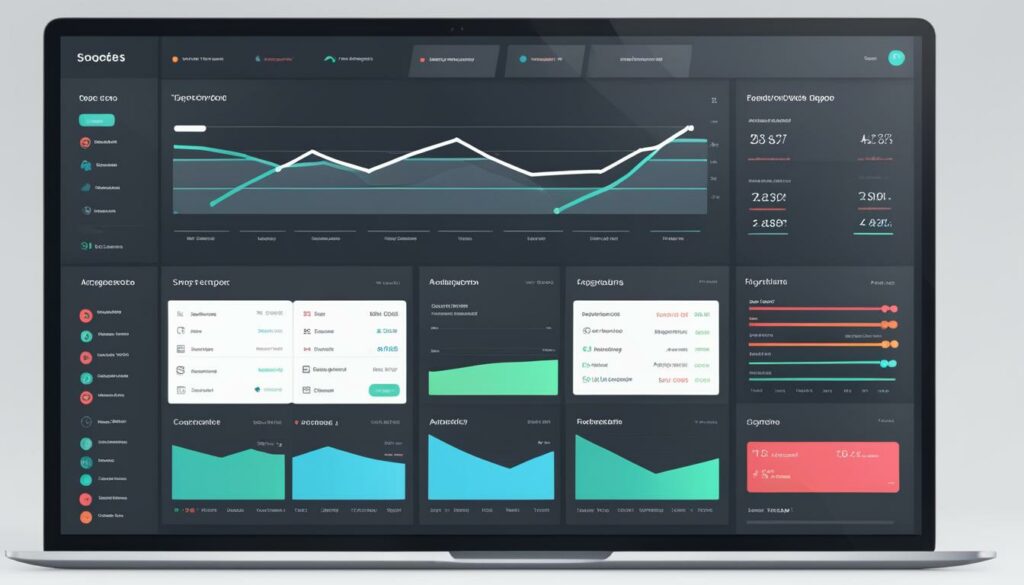Welcome to the world of healthcare website hosting! As more and more patients turn to the internet for healthcare information and services, it’s crucial for healthcare providers to have a strong online presence. But hosting a healthcare website comes with unique challenges and requirements. In this article, we’ll explore the key insights and best practices for healthcare website hosting to ensure a secure and reliable online platform for your healthcare organization.
When it comes to hosting a healthcare website, security is of utmost importance. As a healthcare provider, you deal with sensitive patient information that must be protected according to HIPAA regulations. This means partnering with a hosting provider that offers secure hosting for healthcare websites and ensures HIPAA compliance. By choosing a reliable hosting service, you can have peace of mind knowing that your patients’ data is safe and secure.
Another crucial aspect of healthcare website hosting is ensuring a seamless user experience. Patients expect the same level of usability and accessibility from healthcare websites as they do from other websites. This includes making your website mobile-friendly to cater to users accessing your site from their smartphones. By creating a user-friendly and mobile-responsive website, you can enhance patient engagement and satisfaction.
But it’s not just about the technical aspects of hosting a healthcare website. Content plays a critical role in connecting with your patients and providing valuable information. Developing a wide range of patient-centric content can help educate and engage your audience. Personalizing the website experience based on user data can also improve engagement and foster a more personalized and tailored approach to healthcare.
Integrating your healthcare website with existing healthcare systems can also streamline processes and improve efficiency. This integration allows for seamless data exchange, making it easier to manage patient information and provide quality care. By partnering with a hosting service that offers healthcare integration capabilities, you can enhance the overall functionality and user experience of your website.
When it comes to healthcare website design, it’s important to avoid the “design by committee” approach. Instead, focus on a patient-first approach, creating an authentic and user-centric experience. By designing with the patient in mind, you can create a website that resonates with your audience and fosters trust and credibility.
Finally, consider incorporating secure communication channels such as chatbots and live chat into your healthcare website. These features can enhance patient satisfaction by providing instant support and assistance. Patients can easily access information, schedule appointments, and receive timely responses to their queries, improving overall patient experience.
By following these insights and best practices, you can ensure that your healthcare website is secure, user-friendly, and provides a seamless experience for your patients. A well-hosted website can not only enhance patient engagement but also contribute to the overall success and growth of your healthcare organization.
If you’d like to learn more about healthcare website hosting, continue reading to explore the importance of HIPAA compliance in healthcare hosting, enhancing healthcare user experience with design best practices, overcoming challenges in healthcare website design, and concluding with key takeaways for creating an optimal healthcare website.
Importance of HIPAA Compliance in Healthcare Website Hosting
When it comes to hosting healthcare websites, HIPAA compliance is of utmost importance. Ensuring the security and confidentiality of patient data is not only essential for maintaining trust but also for avoiding potential penalties. To achieve HIPAA compliant hosting, several key guidelines and practices must be followed.
Secure Encryption and SSL Certification
One of the fundamental requirements of HIPAA compliance is implementing secure encryption and SSL certification. This ensures that any sensitive data transmitted between the website and users remains private and cannot be intercepted by unauthorized parties.
Automated Backups and Data Protection
Regular automated backups are crucial for healthcare websites. In the event of data loss or system failure, these backups serve as a safety net, allowing organizations to quickly restore and recover critical information. Additionally, proper data protection measures, such as secure data destruction techniques, must be in place to permanently delete patient data when necessary.
Proper User Permissions and Access Control
To maintain HIPAA compliance, healthcare websites should implement proper user permissions and access control. This ensures that only authorized individuals have access to sensitive patient information, reducing the risk of data breaches and unauthorized use or disclosure.
“HIPAA compliance is not just about protecting patient data; it’s about safeguarding their trust in healthcare organizations. By following the guidelines and best practices, websites can ensure a secure and reliable hosting environment.”
– Dr. Emily Walker, Chief Information Officer at SecureMed Plus
Web Hosts with HIPAA Expertise
Choosing a web hosting provider with experience in HIPAA compliant hosting is essential. These providers have an in-depth understanding of the unique needs and challenges faced by medical practices and can effectively maintain the required security measures.
By adhering to HIPAA guidelines for websites, healthcare organizations can protect patient data, avoid potential penalties, and maintain the trust of their patients. Secure hosting for healthcare websites is not only a requirement but a responsibility that all healthcare providers should prioritize.
| Benefits of HIPAA Compliant Hosting | Challenges of Non-Compliance |
|---|---|
| 1. Protection of patient data 2. Avoidance of legal penalties 3. Enhanced trust and reputation |
1. Risk of data breaches 2. Potential legal ramifications 3. Damage to reputation and patient trust |
Enhancing Healthcare UX with Design Best Practices
When it comes to designing a healthcare website, incorporating best practices for user experience (UX) is crucial. By implementing intuitive design elements, focusing on accessibility, and leveraging innovative technologies, healthcare websites can enhance user satisfaction and engagement. Let’s explore some key design principles that can take healthcare UX to the next level:
Minimalistic UI for Efficient Information Navigation
A minimalistic user interface (UI) plays a significant role in helping users navigate through large amounts of healthcare information seamlessly. By simplifying the design, removing clutter, and prioritizing essential elements, visitors to the website can find the information they need quickly and efficiently. Emphasizing clear navigation menus and search functionalities ensures a smooth user experience.
Designing for Accessibility to Accommodate All Users
Inclusivity is a vital aspect of healthcare design. Creating an accessible website ensures that users of all backgrounds, abilities, and disabilities can access the content easily. Incorporating features such as alt tags for images, screen reader compatibility, and keyboard navigation options enables individuals with visual impairments or physical limitations to interact effectively with the website.
Data Visualization for Managing Complex Healthcare Information
The healthcare industry generates vast amounts of complex data that can be overwhelming for users. Through the use of data visualization techniques, such as charts, graphs, and interactive dashboards, healthcare websites can present information in a visually appealing and digestible format. This enables users to comprehend and analyze data more effectively.
Chatbots and Virtual Assistants for Seamless User Assistance
Chatbots and virtual assistants are revolutionizing healthcare websites by providing real-time user assistance. They can help users find information, schedule appointments, answer frequently asked questions, and even provide medical advice within their capabilities. Incorporating these intelligent conversational interfaces enhances the user experience and reduces the need for human intervention in routine tasks.
AI-Powered Technology for Personalized Care Recommendations
Artificial intelligence (AI) has the potential to transform healthcare UX by providing personalized care recommendations. AI algorithms can analyze user data, such as medical history and preferences, to offer tailored suggestions and treatment plans. This not only improves the overall user experience but also empowers users to take control of their health.
By combining these design best practices, healthcare websites can create an interface that is both visually appealing and user-centric. The result is an enhanced healthcare UX that improves user engagement and satisfaction.
| Design Principle | Benefits |
|---|---|
| Minimalistic UI | – Faster and easier information retrieval – Reduced cognitive load – Enhanced user satisfaction |
| Accessibility | – Inclusivity for all users – Compliance with accessibility standards – Improved user engagement |
| Data Visualization | – Improved understanding of complex data – Enhanced decision-making – Increased user engagement |
| Chatbots and Virtual Assistants | – Real-time user assistance – Improved service availability – Reduced customer support workload |
| AI-Powered Technology | – Personalized care recommendations – Improved health outcomes – Enhanced user empowerment |
Overcoming Challenges in Healthcare Website Design
When it comes to healthcare website design, there are unique challenges that need to be addressed to ensure a seamless user experience. From complex electronic medical record systems to data transfers between hospitals, healthcare websites require careful planning and user-centric design.
Understanding User Needs through Research
To overcome these challenges, conducting user research is crucial. By understanding the needs of both healthcare professionals and patients, you can develop an application that caters to their requirements. Through user research, you can gather valuable insights and feedback that can inform the design process.
Focusing on Minimalistic UI and Design for Accessibility
One of the key challenges in healthcare website design is presenting complex information in a clear and concise manner. By adopting a minimalistic user interface (UI), you can simplify the presentation of data and improve usability. Additionally, designing for accessibility ensures that users of all backgrounds, including those with disabilities, can access the content without any barriers.
Utilizing Data Visualization and AI-powered Technology
Data visualization is another powerful tool in healthcare website design. By presenting complex data in visual formats such as charts and graphs, you can enhance comprehension and decision-making for both healthcare professionals and patients.
“Data visualization helps manage complex healthcare information by presenting it in a visually appealing format.”
Furthermore, incorporating chatbots and AI-powered technology can greatly contribute to the user experience. Chatbots can assist users in finding information, booking appointments, and providing immediate responses to common queries. AI-powered technology can automate tasks, offer personalized care recommendations, and improve overall engagement.
Continuously Iterating and Improving
Overcoming challenges in healthcare website design requires an iterative approach. By analyzing user feedback, monitoring website analytics, and conducting regular usability testing, you can identify areas for improvement and enhance the overall user experience.
To create a better healthcare UX, it is essential to address challenges through user research, minimalistic UI design, accessibility considerations, data visualization, and the integration of AI-powered technology. By tackling these challenges head-on, healthcare websites can provide a user-friendly experience that meets the diverse needs of both healthcare professionals and patients.

“By tackling these challenges head-on, healthcare websites can provide a user-friendly experience that meets the diverse needs of both healthcare professionals and patients.”
Conclusion
Designing an optimal healthcare website requires careful consideration of user experience (UX), HIPAA compliance, and the unique challenges faced by the healthcare industry. By incorporating design best practices such as a minimalistic user interface (UI), accessibility features, data visualization, and leveraging technologies like chatbots and AI, healthcare websites can provide a seamless and user-friendly experience for both healthcare professionals and patients.
A healthcare website with a minimalistic UI helps users navigate through complex information more efficiently, improving their overall experience. It is crucial to design for accessibility, ensuring that individuals with disabilities can easily access the website’s content. Data visualization techniques assist in presenting complex healthcare information in a visually appealing and easily understandable format, facilitating better decision-making.
Additionally, the integration of chatbots and AI-powered solutions can enhance the user experience, enabling users to find information and schedule appointments more conveniently. These technologies can automate tasks and provide personalized care recommendations, resulting in increased engagement and satisfaction.
With the right design and development approach, healthcare websites have the potential to effectively serve their intended audience, improve overall engagement, and enhance satisfaction levels. By considering healthcare UX, website design, and app development in conjunction with industry-specific requirements and regulations, healthcare organizations can create websites and applications that truly cater to the needs of their users.
FAQ
Q: Why is user experience important for healthcare websites?
A: User experience is critical for healthcare websites because patients expect the same level of usability as other websites. Providing a seamless and user-friendly experience helps engage and educate users.
Q: Why is it important to make healthcare websites mobile-friendly?
A: Making healthcare websites mobile-friendly is essential because most users now access websites from their smartphones. Ensuring a website is responsive and compatible with all devices improves user experience.
Q: How can patient-centric content benefit healthcare websites?
A: Creating a wide range of patient-centric content helps educate and engage users. By providing valuable information and resources, healthcare websites can build trust and establish themselves as a reliable source of healthcare information.
Q: How can personalizing the website experience improve user engagement?
A: Personalizing the website experience based on user data can improve engagement. Tailoring content, recommendations, and user interfaces to each individual’s preferences and needs enhances the user experience and encourages deeper engagement with the website.
Q: What are the benefits of integrating healthcare systems with websites?
A: Integration with healthcare systems streamlines processes and improves efficiency. By connecting the website with electronic medical record systems, appointment scheduling, and other healthcare tools, healthcare websites enhance user experience and provide seamless access to important information and services.
Q: How can a patient-first approach improve healthcare website design?
A: Avoiding design by committee and focusing on a patient-first approach results in a more authentic user experience. Understanding the needs, pain points, and preferences of patients allows designers to create intuitive and user-friendly interfaces that cater to their unique requirements.
Q: What features should healthcare websites have to ensure HIPAA compliance?
A: To ensure HIPAA compliance, healthcare websites should have secure encryption and SSL certification, automated backups, proper user permissions, and secure data destruction. Working with web hosts experienced in maintaining HIPAA compliance is crucial for healthcare websites.
Q: How can a minimalistic UI benefit healthcare websites?
A: Designing healthcare websites with a minimalistic UI allows users to navigate large amounts of information efficiently. By using clean and simple design elements, healthcare websites create a visually pleasing and easy-to-use interface.
Q: Why is designing for accessibility important in healthcare website design?
A: Designing for accessibility ensures that users of all backgrounds, including those with disabilities, can easily access the content on healthcare websites. By following accessibility guidelines, healthcare websites provide equal access to essential healthcare information for all users.
Q: How can data visualization benefit the management of complex healthcare information?
A: Data visualization presents complex healthcare information in a visually appealing format, making it easier to understand and manage. By using charts, graphs, and other visual elements, healthcare websites help users make sense of intricate medical data.
Q: How can chatbots and virtual assistants assist users on healthcare websites?
A: Chatbots and virtual assistants can help users find information, book appointments, and provide personalized assistance on healthcare websites. By using AI-powered technology, these tools enhance the user experience and improve overall satisfaction.
Q: How can AI-powered technology improve healthcare website user experience?
A: AI-powered technology can automate tasks, provide personalized care recommendations, and enhance overall user experience on healthcare websites. By leveraging AI algorithms, healthcare websites can offer tailored services and support to users.
Q: How can user research help overcome challenges in healthcare website design?
A: Conducting user research on healthcare professionals and patients is crucial to understand their unique needs and develop an application that addresses them. By gathering insights and feedback from users, healthcare websites can overcome design challenges and create a more effective and user-friendly experience.
Q: What are the key considerations in designing a healthcare application UX?
A: When designing a healthcare application UX, it is important to focus on minimalistic UI, design for accessibility, data visualization, and leverage technologies like chatbots and AI. These considerations help create a seamless and user-friendly experience for both healthcare professionals and patients.












